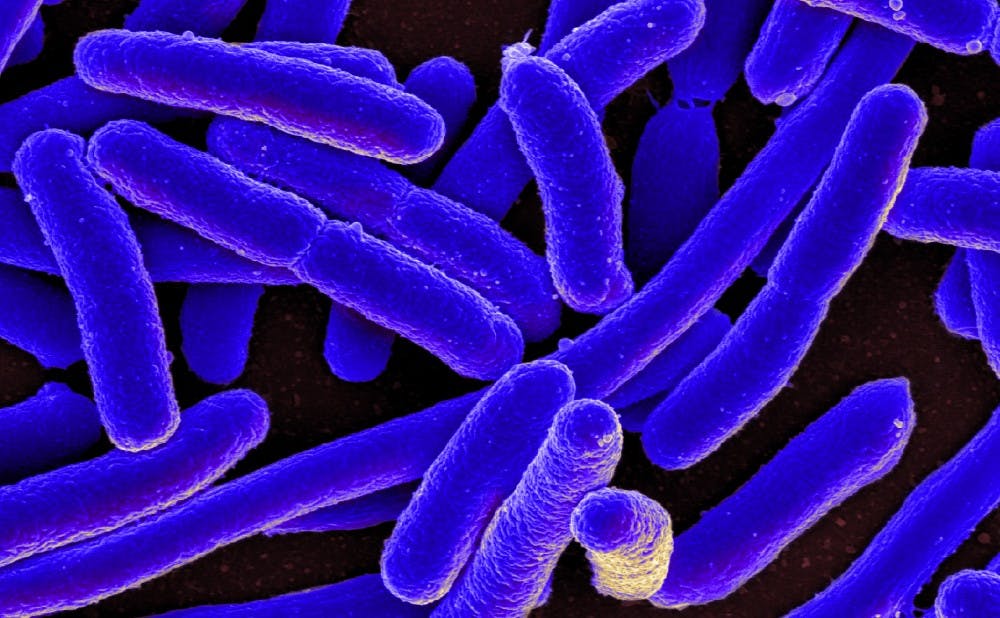Bacteria live just about everywhere in the body. But despite their prevalence, scientists know very little about how these bacteria are related.
Using a formula originally designed for geology, researchers at Duke are hoping to shed some light on the issue. A research team led by Lawrence David, assistant professor in the Duke Center for Genomic and Computational Biology, developed a new method to accurately measure bacteria levels in the human body.
Alex Washburne, a postdoctoral associate, explained that evolutionary biologists have long been working to construct the tree of life for larger species. But doing the same for microscopic species such as bacteria is a significant challenge. Justin Silverman, a M.D./Ph.D. student in David's lab, added that it would be impossible to individually count the trillions of bacteria in any one person.
“When we look at the microbiome, we look at very complicated communities with thousands of species, and we know very little about what all of them are doing,” Washburne said.
Instead, researchers have typically relied on sampling a small portion of bacteria and then extrapolating the total number of bacteria in the body based on the sample.
Silverman likened the situation to trying to count the number of colored balls in a large ball pit. If a researcher picked up a handful of the balls in the pit, he or she could mark the colors of each ball in their hand. Then, the researcher could apply this information to figure out how many balls of each color are in the pit.
However, this method comes with its flaws.
“The problem with relative amounts is that it’s very hard to analyze data that only gives relative information,” Silverman said.
He said that even simple things—like the subject eating a sandwich before data collection—can affect the data. Suppose that bacterial species A feeds on the digested nutrients from the sandwich, but species B and C cannot. The number of bacteria A in the body will increase while the number of bacteria B and C remain the same. However, Silverman said the traditional sampling method would actually lead to the conclusion that the number of B and C bacteria had decreased.
To more accurately categorize and count the bacteria, Silverman adapted a mathematical tool typically used by geologists to study rock composition. A rock is made up of various minerals and substances, just as bacteria include a diverse array of species.
“We’re finding that when we begin this marriage between biology and mathematics, there are new types of mathematical tools that are developed,” Washburne said.
Washburne and Silverman both emphasized that the primary contribution of the paper was the mathematical tool itself. This formula may be used by evolutionary biologists in the future to evaluate their hypotheses about the relationship between different species.
But the researchers also made a surprising discovery about two closely-related species of bacteria within the human mouth. The team found that different portions of the mouth actually housed different bacteria, contradicting what they had previously expected. Their findings suggest that bacteria species might have diverged to match different parts of the body.
“What’s surprising is that you expect, if they’re closely related, then it’s just going to be this homogeneous mixture where you see a bunch of [bacteria] all over the mouth equally distributed,” Silverman said.
This is just the latest piece of knowledge to come from an untapped wealth of information about the bacteria in the human body, the researchers said.
“By and large, it’s a whole new world in there,” Washburne said. “It’s almost as if we found a new planet, and we just dived right into the rainforest.”
Get The Chronicle straight to your inbox
Signup for our weekly newsletter. Cancel at any time.

